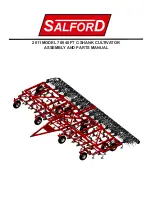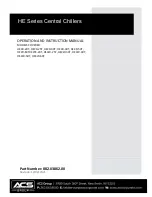
8
OPERATION
OPERATION
OPERATION
OPERATION
PRE-START
PRE-START
PRE-START
PRE-START INSPECTION
INSPECTION
INSPECTION
INSPECTION
1.
Make sure all safety guards are in place
and all nuts and bolts are secure.
2.
Check oil level in engine crankcase. See your
engine manual for procedure and specifcations.
3.
Inspect air cleaner for cleanliness. See your engine
manual for procedure.
4.
Check the fuel supply. Fill the fuel tank no closer
than 1inch from top of tank to provide space for
expansion. See your engine manual for fuel
recommendations.
5.
Be sure spark plug wire is attached and spark
plug is tightened securely.
6.
Check position of wheels and wheel lockouts.
7.
Check depth regulator lever position.
8.
Examine undermeath and around engine
for signs of oil or fuel leaks.
9.
Inspect fuel hoses for tightness and fuel seepage.
10. Look for signs of engine damage.
11. Remove excessive debris from muffler
area and recoil starter.
START-UP
START-UP
START-UP
START-UP
The controls required to start and run the rototiller are located on the engine and are
marked ”choke” and “ Throttle”.
A more detailed description of engine operation and all related precautions and procedures can be
found in the engine manufacturer’s manual that accompanies each tiller.
COLD
COLD
COLD
COLD STARTS
STARTS
STARTS
STARTS
1.
Move choke lever to full choke position.
2.
Move throttle lever to “ start”.
3.
Pull starting rope out slowly one time and allow to return normally.
4.
Pull starting rope out rapidly, and allow rope to return normally.
5.
When engine starts, gradually move choke lever to “ no choke” position and increase throttle
speed.








































